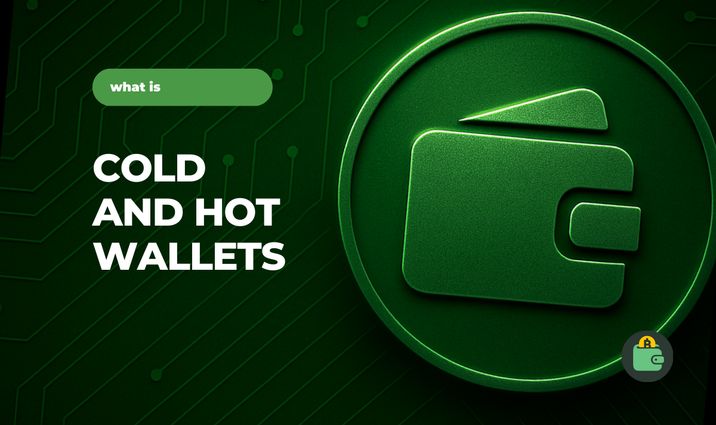Cold and Hot Wallets: How to Make a Choice

Most people, especially rookies, often confuse hot and cold wallets with custodial and self-custodial ones. It is not surprising, because the crypto market is enormous, and new storage solutions appear almost daily. In this article, we are going to talk about the difference between hot and cold wallets. We’ll also give you a short guide to help you choose the right wallet for your needs.
Key Takeaways
- Hot wallets are connected to the Internet, which allows easy access to and use of cryptocurrency. They work like websites or mobile apps — for example, Coin Wallet.
- Cold wallets aren’t connected to the Internet and usually come in physical form — like a Ledger device.
- The best approach is to combine both hot and cold wallets. Cold ones are suitable for long-term storage. Hot ones are for daily financial operations.
Understanding Hot Wallets
You probably already know that there are self-custodial and custodial wallets. The difference between them is in the way your keys are stored. When you use a self-custodial wallet like Coin Wallet, only you control your private keys — which are stored on your own device, like a smartphone or personal computer.
However, when we talk about hot wallets, we’re referring not to how keys are stored, but to whether the wallet is connected to the Internet.
So, hot wallets are online wallets that connect to the Internet, making it easy for users to access their crypto for daily use.
Hot Wallet Examples: In general, these are all online wallets, such as Coin Wallet, MetaMask, Trust Wallet, and Coinbase.
Hot Wallets: Advantages ✅ and Disadvantages ❌
✅ Comes in different forms — mobile, desktop, and web wallets.
✅ Fast access to crypto markets and your coins.
✅ You can react quickly to sudden market changes.
✅ If you're a beginner investor, you can experiment with crypto assets and learn how to use them.
✅ Easy, comfortable, fast.
❌ Higher risk of hacks due to constant internet connection.
❌ If you forget your seed phrase, you can lose access to your assets.
❌ Some wallets may charge service fees.
Understanding Cold Wallets
Unlike hot wallets, cold wallets are devices or programs that are not connected to the Internet. If a cold wallet is a hardware wallet, data is stored on a physical device. If it’s a software solution, the data is stored locally on your device.
Examples of cold wallets include physical devices like Ledger, Trezor, CoolWallet, SafePal, and others.
Cold Wallets: Advantages ✅ and Disadvantages ❌
✅ High level of security and confidentiality.
✅ They store private keys offline.
✅ Minimal risk of hacks.
✅ Your seed phrase is less likely to be lost or erased.
❌ Slower access to your funds when making transactions.
❌ If the device is lost and not backed up, your funds are gone.
❌ Can be expensive.
The Bottom Line
To choose the right wallet, you need to think about your needs. If you want quick access to your assets and need to react quickly to market shifts, you should probably go with a hot wallet. But if you have many high-value assets, you had better use a cold wallet. Many cryptocurrency investors segregate their assets, storing their most valuable holdings in a cold wallet for increased protection.
However, we recommend using both types of wallets together. For example, you can use a hot wallet for daily transactions and crypto purchases and a cold wallet for storing your most valuable assets.
You can use Coin Wallet as a hot wallet — it's highly secure, supports many cryptocurrencies, and doesn't require KYC verification. Private keys always remain on your device. Moreover, Coin Wallet supports hardware keys.